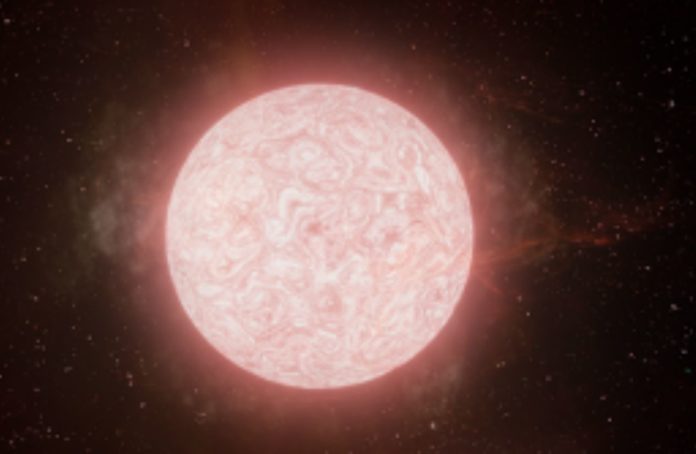A Massive Star Moments Before Going Supernova
For the first time, scientists captured the dramatic end of a red supergiant’s life in real-time, following the huge star’s rapid self-destruction and final death throes before collapsing into a Type II supernova.
Using two Hawaii telescopes – the University of Hawaii Institute for Astronomy Pan-STARRS on Haleakala, Maui and the W. M. Keck Observatory on Maunakea, Hawaii Island – a group of scientists investigating the Young Supernova Experiment (YSE) transient survey witnessed the red supergiant during its final 130 days before its deadly detonation.
“This is a breakthrough in our understanding of what massive stars do moments before they die,” said Wynn Jacobson-Galán, lead author of the study. “Direct detection of pre-supernova activity in a red supergiant star has never been observed before in an ordinary Type II supernova. For the first time, we watched a red supergiant star explode!”
The doomed enormous star was first discovered by Pan-STARRS in the summer of 2020, thanks to the massive amount of light it emits. A supernova exploded in the sky a few months later, in the fall of 2020.
Using Keck Observatory’s Low-Resolution Imaging Spectrometer, the team immediately caught the bright flash and obtained the first spectra of supernova 2020tlf, or SN 2020tlf (LRIS). The data revealed thick circumstellar material encircling the star at the time of the explosion, which was most likely the same gas that Pan-STARRS had imaged the red supergiant star forcefully ejecting earlier this summer.
“Keck was instrumental in providing direct evidence of a massive star transitioning into a supernova explosion,” added senior author Raffaella Margutti. “It’s like watching a ticking time bomb. We’ve never confirmed such violent activity in a dying red supergiant star where we see it produce such a luminous emission, then collapse and combust, until now.”
After the explosion, the team continued to monitor SN 2020tlf, and using data from the DEep Imaging and Multi-Object Spectrograph (DEIMOS) and Near Infrared Echellette Spectrometer (NIRES) at Keck Observatory, they discovered that SN 2020tlf’s progenitor red supergiant star, which was located in the NGC 5731 galaxy about 120 million light-years away as seen from Earth and was 10 times more massive than the Sun.
Previous theories on how red supergiant stars grow before exploding have been debunked by this research. Prior to SN 2020tlf, all red supergiants detected before exploding were quite peaceful, with no indication of explosive eruptions or brilliant emission. However, the discovery of intense radiation originating from a red supergiant in its final year before exploding implies that at least some of these stars must experience considerable changes in their internal structure before ejecting gas in a chaotic explosion.
The discovery clears the way for transient surveys like YSE to look for bright radiation from red supergiants and gather more evidence that such behavior could foreshadow a huge star’s impending supernova demise.
“I am most excited by all of the new ‘unknowns’ that have been unlocked by this discovery,” said Jacobson-Galán. “Detecting more events like SN 2020tlf will dramatically impact how we define the final months of stellar evolution, uniting observers and theorists in the quest to solve the mystery on how massive stars spend the final moments of their lives.”
The discovery is published in today’s issue of The Astrophysical Journal.
You were reading: First look at how a red supergiant star explodes
